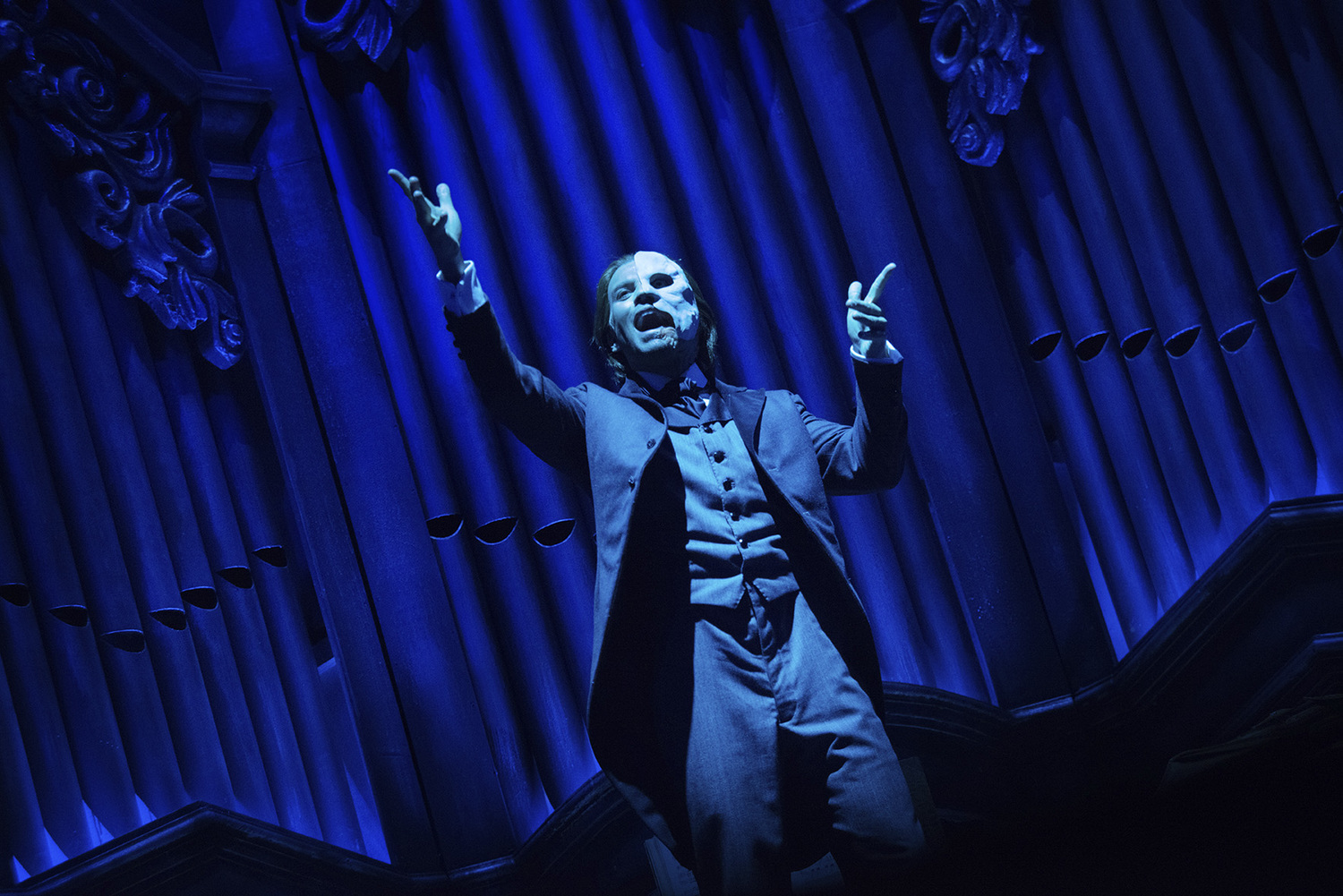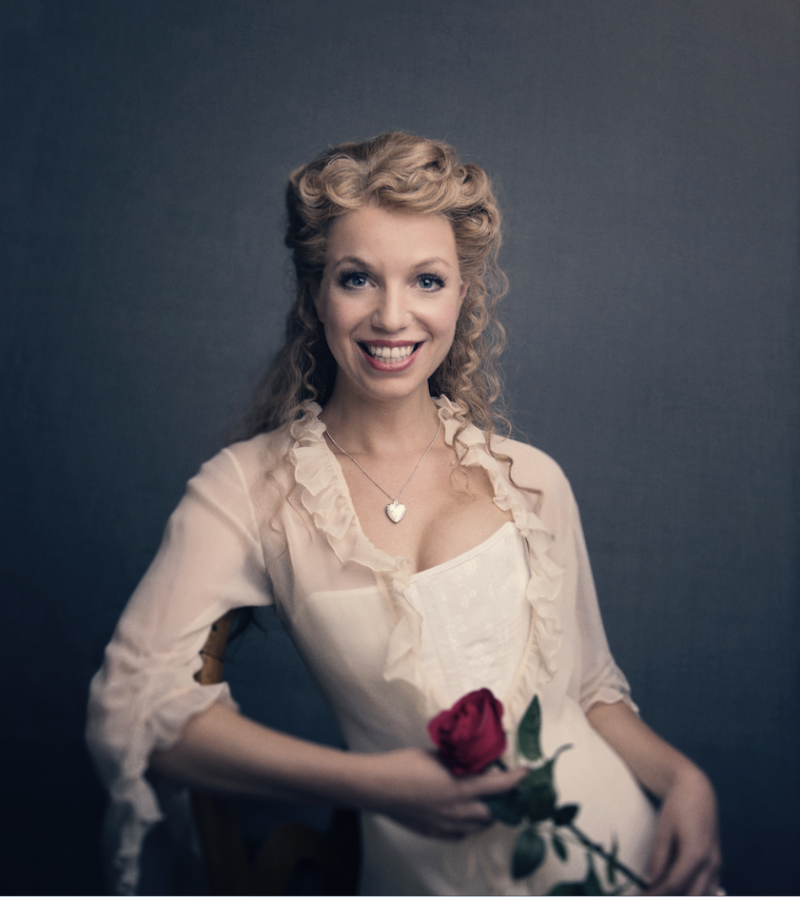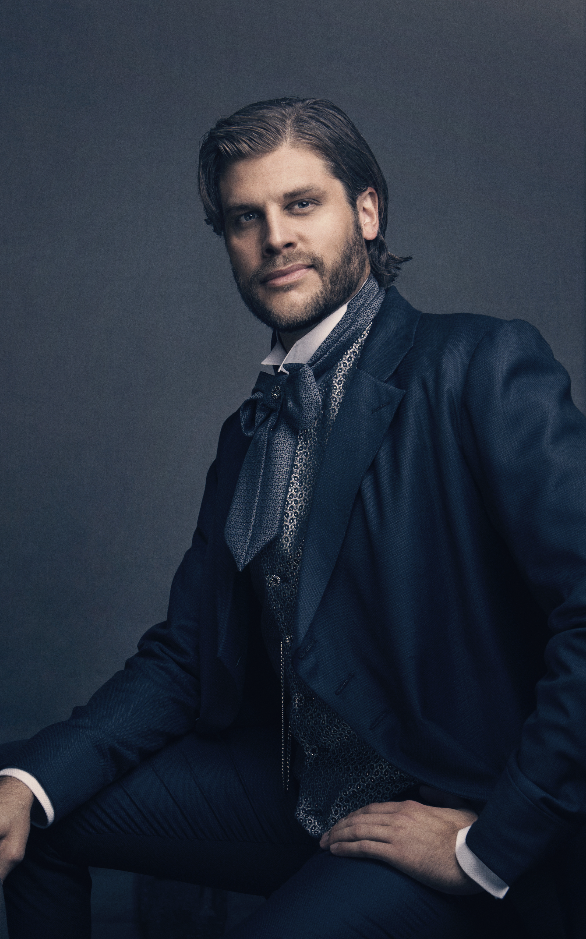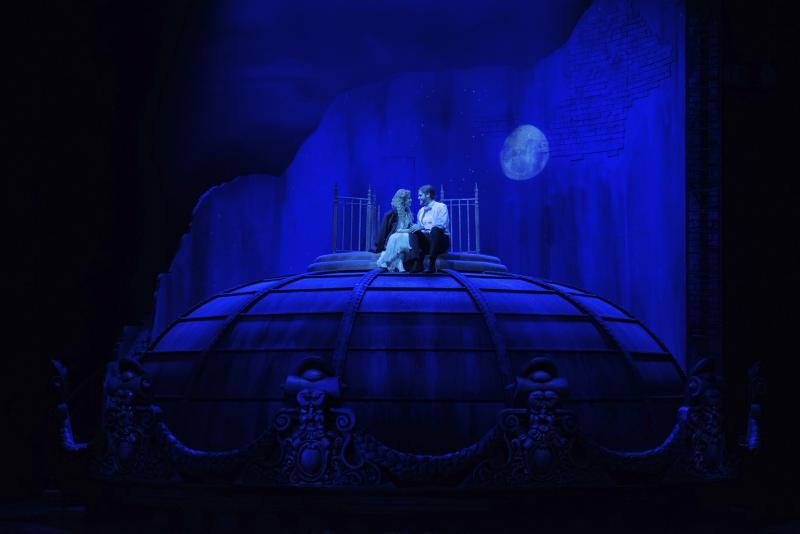Review: THE PHANTOM OF THE OPERA - A Phantastic Phantom at Folketeatret

![]() As an original Norwegian Production "The Phantom of the Opera" is a triumphant success showcasing talents seldom seen on an Oslo stage.
As an original Norwegian Production "The Phantom of the Opera" is a triumphant success showcasing talents seldom seen on an Oslo stage.
Based on the classic novel "Le Fantôme de L'Opéra" by Gaston Leroux, The Phantom of the Opera tells the story of a masked figure who lurks beneath the catacombs of the Paris Opera House, exercising a reign of terror over all who inhabit it. He falls madly in love with an innocent young soprano, Christine, and devotes himself to creating a new star by nurturing her extraordinary talents and by employing all of the devious methods at his command.
After seeing the original production countless times over the years, it can be hard to see a new version of this masterpiece. "Phans" of this musical also feel a certain ownership to the piece, which can sometimes be an obstruction seeing an all-new version. And while some of the choices Stephen Barlow and his team have made left me bewildered, there are many aspects of this production to rejoice.
Let us get the "elephant" in the room (pun indented) out of the way. The costumes and sets in the original production, by Maria Björnson, are a masterpiece. They have not dated in any way in the last thirty-two years, and I have yet to see a more "complete" design in any production of Phantom or otherwise. That said, this all new production proved something very important. Namely that the musical works on its own merits even without the original direction and scenery. While the original production is very abstract and suggestive in its design, Andrew Riley's massive stage pieces are more based in reality. They are detailed, and more importantly, it feels like "The Phantom of the Opera." The visuals are reminiscent both the original novel and several movie adaptations such as the 1925 silent movie version starring Lon Chaney.
 This is deifinetly Espen Grjotheim's breakthrough performance. He does a masterfully singular portrayal of the phantom, exhibiting more pathos than menace, at least in the beginning. He is less the "elegant masked seducer" and more the blundering man who has never dared to approach a beautiful woman because of his appearance. It isn't until he hits the beautiful high falsetto note in "Close your eyes. Let your spirit start to soar" that he really manages to entrance Christine with his music (of the night). Vocally Grjotheim has never sounded better. He fulfills the demanding vocals, and is always in full control. During the scenes where the more menacing side of the phantom is revealed, such as in the unmasking scene, I would have liked for him to be less in control vocally and release his 'inner beast'; not as focused on singing the correct notes. Those places made it feel more like I was watching an "opera" and not musical theatre. But he truly does the role justice in such a way that I hope, when his time in the Norwegian production is done, The Really Useful Group will consider moving him to the London production.
This is deifinetly Espen Grjotheim's breakthrough performance. He does a masterfully singular portrayal of the phantom, exhibiting more pathos than menace, at least in the beginning. He is less the "elegant masked seducer" and more the blundering man who has never dared to approach a beautiful woman because of his appearance. It isn't until he hits the beautiful high falsetto note in "Close your eyes. Let your spirit start to soar" that he really manages to entrance Christine with his music (of the night). Vocally Grjotheim has never sounded better. He fulfills the demanding vocals, and is always in full control. During the scenes where the more menacing side of the phantom is revealed, such as in the unmasking scene, I would have liked for him to be less in control vocally and release his 'inner beast'; not as focused on singing the correct notes. Those places made it feel more like I was watching an "opera" and not musical theatre. But he truly does the role justice in such a way that I hope, when his time in the Norwegian production is done, The Really Useful Group will consider moving him to the London production.
 Mira Ormala expresses the sweet naivety of Christine exquisitely. I believed in her portrayal, and she truly sings beautifully in her very high soprano voice (I read a review from one of my colleguages claiming that she had just as wide vibrato as Carlotta, but this is just not true. She even has a coloratura voice). Since Norwegian is not her first language she struggles a bit with pronunciations, but I am sure that with more performances under her belt she, will continue to grow.
Mira Ormala expresses the sweet naivety of Christine exquisitely. I believed in her portrayal, and she truly sings beautifully in her very high soprano voice (I read a review from one of my colleguages claiming that she had just as wide vibrato as Carlotta, but this is just not true. She even has a coloratura voice). Since Norwegian is not her first language she struggles a bit with pronunciations, but I am sure that with more performances under her belt she, will continue to grow.
 Finally a heroic Raoul, who is as forceful singer and stage presence as Steve Barton was in the original London production. Broad-shouldered Carl Lindquist has the goods! I have been so tired of seeing the part be portrayed by actors who fail to be the 'knight in shining armor'; who come off more like spoiled, pompous aristocrats used to getting their way. Lindquist's portrayal makes for a more interesting love triangle.
Finally a heroic Raoul, who is as forceful singer and stage presence as Steve Barton was in the original London production. Broad-shouldered Carl Lindquist has the goods! I have been so tired of seeing the part be portrayed by actors who fail to be the 'knight in shining armor'; who come off more like spoiled, pompous aristocrats used to getting their way. Lindquist's portrayal makes for a more interesting love triangle.
Christine's rival singer, Carlotta Giudicelli, played by international soprano Solveig Kringlebotn, is a joy to witness. She encompasses a comical talent as the horrendous diva, bringing effervescence and levity to the scene. Markus Bjørlykke's parody of the stereotypical Italian tenor Ubaldo Piangi floored me; doubly so as this is his professional debut! His fantastic tenor and comical talent match that of Kringlebotn Carlotta perfectly.
.jpg)
The managers of the Opera Populaire, Firmin and André, wonderfully sung and acted by Hans Marius Hoff Mittet and Arvid Larsen, are also delightfully amusing and oblivious as to how to handle the Opera ghost's misdemeanors. At times, they are so self-preoccupied they do not realize they are singing to a stagehand instead of each other., which is a nice little humorous touch.
Jannike Kruse and Charlotte Brænna show that it takes leading actors to play the supporting parts they way they should. They get more out of their parts than what is originally written - especially Jannike Kruse's commanding presence as the glorious mystic ballet mistress. I am also very glad to see Charlotte Brænna as a Meg Giry that does not use her time on stage to look like the whiny daughter of Madame Giry and more like a concerned friend of Christine. Brava to them both.

As the previous national opera house, the stage leaves limited space in the wings for big scenery, so they have chosen to use the big sets in multiple scenes. For instance, instead of being in the Opera Manager's office for all the "notes" scenes, they have chosen to do them as if they were backstage of the opera, or in the main hall for more than just the masquerade scene at the opening of act two. In most cases this works fine. They may not have the beautiful opening with the chandelier gliding up to the cielling, but when it crashes down at the end if act 1 it does so in a speed I havent seen since the Las Vegas production.
The underground lair is the grandest scenery of them all - the massive organ looks fantastic, almost grown into the stone walls around it. The boat sequence was "almost there", but please give the phantom a longer oar to make him seem more dignified as he crosses the stage.
The graveyard scene in act ? is now moved to the roof of the Opera House, yet again. We see a desperate Christine who is almost contemplating suicide because everything has become "twisted every way." This was a very different approach to "Whishing you were somehow here again," but it worked for me. When the phantom and Raoul arrives the setting becomes more "real life" than in the original, with the Phantom drawing a gun, holding Raoul at gunpoint. Christine shields him from the Phantom. Again a very different approach that makes the phantom less of a haunting figure and more of a distressed man doing whatever it takes to win the affection of his prey.

Opera director Stephen Barlow and choreographer Ewan Jones are inspired choices for this production, as they both have great experience in the opera field. Barlow, for his part, has done a truly commendable job of enhancing the humor in a lot of scenes involving the Opera Managers and the ensemble; I can't recall a production of Phantom where the silent roles of the stagehands got as many laughs.
The song "Prima Donna" is also delightfully cheesy, with Solveig Kringlebotn in her prime, and just when you think it can't get cheesier, she is showered in roses while she holds her final note. Some may think this is too over the top, but I appreciated the ridiculousness of the scene.
I also loved that the "corps de ballet" got more to do in this production than they do originally. It was a welcomed addition to have them in the background doing prompt choreography of that time period.
Less overwhelming were the costumes. More specifically costumes used in the opera sequences. Likewise, I would have wished for more detailed, impressive costumes in the Hannibal and the Masquerade sequences. Most of the other costumes worked fine and fitted with the rest of the scenery.
In conclusion I will say that Folketeatret and Scenekvelder has managed to make a version of the Phantom that is truly their own. It is certainly a better production than the recent Cameron MacIntosh US tour production. To use the Romanian version presented in Bucharest two years ago was a good starting point, and they have expanded it into a well-crafted production that makes massive step forward. With "The Book of Mormon" last year and now "The Phantom of the Opera", I am feeling more positive about the state of Norwegian musical theatre.
Now I hope the producers considers releasing a Norwegian Cast Recording of this show. The audience deserves a permanent record of how wonderful every performer and musician in this production really sounded.
Reader Reviews

Videos

